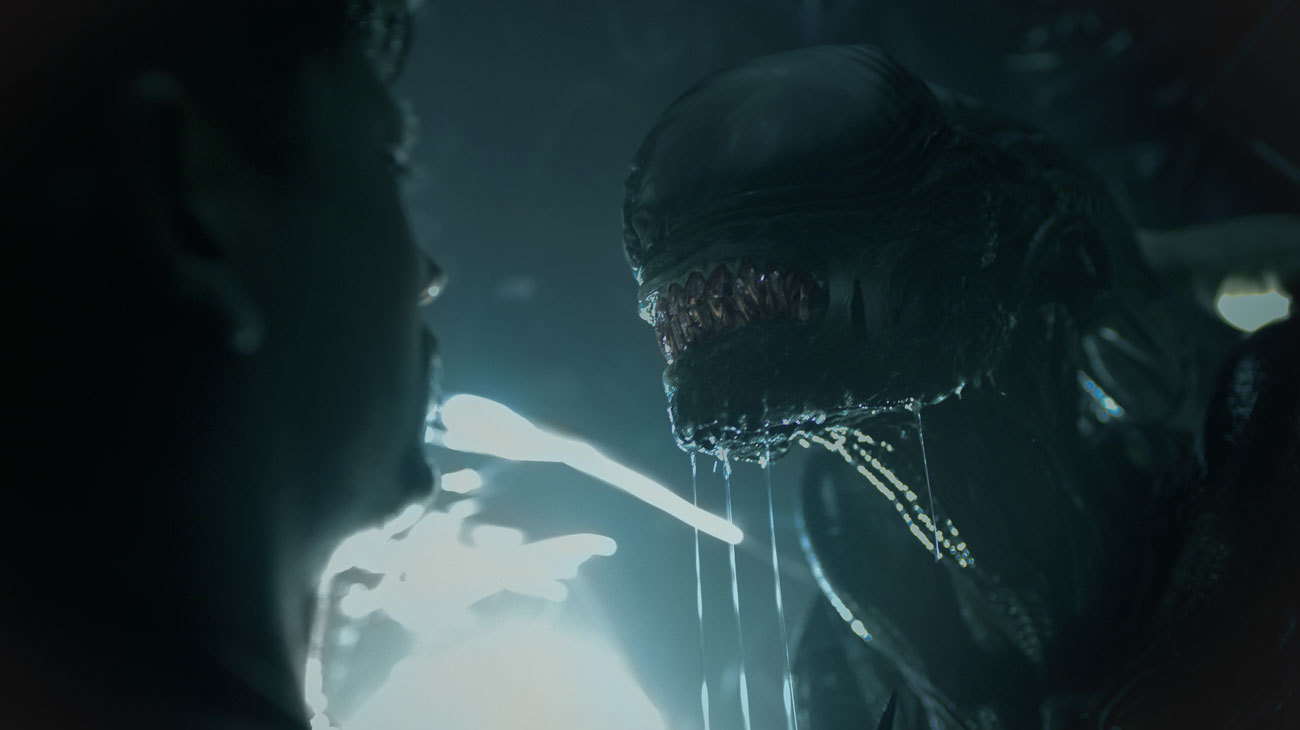This week marks the 20th anniversary of Call of Duty. As part of a week of Call of Duty coverage, this feature takes an in-depth look at 'No Russian', the controversial mission from Modern Warfare 2. It contains discussion of content some readers may find disturbing.
Few video game missions can claim to be as well known or as polarising as No Russian. The fourth mission of Call of Duty: Modern Warfare 2 is the unforgettable story of a deadly terrorist attack. It infamously involves the mass shooting of civilians, a seemingly reckless idea for a piece of entertainment. But behind the shock value and bad press is the tale of a team that dared to push interactive storytelling to its very limits.
To find out how No Russian was put together IGN spoke to designer Mohammad Alavi, who created the mission alongside colleagues at Infinity Ward. With his insight, we examine how No Russian makes use of player discomfort, tightly-controlled pacing, and limited interactivity to create Modern Warfare 2’s shocking twist.
Call of Duty is these days primarily seen as an online multiplayer hub, but it didn’t always have this focus. When the series began in 2003 it was created with cinematic storytelling in mind. Across its first three games developer Infinity Ward found new and exciting methods through which to tell increasingly dramatic stories. In 2007’s Modern Warfare, players were shocked as their character was killed off mid-way through the story in a nuclear explosion. For the sequel the team wanted something bolder.
No Russian places you at the centre of a terrorist attack in a Russian airport. Arriving less than a decade after the September 11 attacks, it was a deeply uncomfortable mission when it was released in 2009. It remains so to this day, not least because your role in the mission is not to prevent the attack, but to commit it. You play as Joseph Allen, an undercover CIA agent attempting to win the trust of Vladimir Makarov; a Russian ultranationalist who intends to stoke the fires of war between Russia and the USA through a false-flag attack. “No Russian” refers to Makarov’s insistence that no one on his team reveals their nationality; people need to believe Russia was attacked by Americans, not a cell of its own people.
The idea for No Russian began with Steve Fukuda, one of the four design leads on Modern Warfare 2. “Steve's original pitch was you're with a bunch of guys and they're all in Kevlar and they have M4s,” recalls Alavi. “And he knows all he has to say is M4 and everybody realizes, ‘Okay, so we're the Americans.’”
But in Fukuda’s mind, these characters weren’t Americans. Packed into the back of an APC, he imagined the opening of the mission to be deathly quiet. “And then before the doors open, the guy in front of you turns, he goes, ‘Remember, no Russian,’” Alavi remembers Fukuda telling him. “And the doors open. It's just a bunch of civilians in a mall. And he just starts mowing them down.’
Alavi was fascinated by Fukuda’s ambition to flip player expectations in such a dramatic way. He saw it as an opportunity to create a powerful storytelling moment – one that would not just be the catalyst for Modern Warfare 2’s story, but something that would remain anchored in people’s minds for years to come.
“I often got questions,” says Alavi. “‘Did you mean to make something controversial?’ And I was like, ‘No. That actually wasn't my intention. What I meant to make was something memorable.’”
Alavi believed the key to making No Russian memorable lay with Makarov. Because of the first-person nature of Call of Duty, players would typically never be in the same room as Makarov – the main characters were always two steps and often an entire country behind him. But by casting you as an undercover CIA operative, Alavi could put you within touching distance of Makarov during his bloodiest hour.
“You're going to remember this guy,” Alavi says. “Because you're never going to see him again in first person, but he's got to be the through-line for at least the end of this game, if not all the way into the next game. So, it's got to be memorable.
“I was like, ‘I've got to just hammer this point home.’ So yeah, I was basically just trying to think of the most atrocious things that could happen.”
And so Alavi and the team set to work creating what they hoped would become Call of Duty’s most memorable moment. Designer Julian Luo laid down the level’s geography, which shifted from Fukuda’s initial pitch of a shopping mall to Zakhaev International, a fictional Moscow airport. The APC was turned into an elevator, and the opening of its doors triggered Alavi’s script for what would become one of the most infamous sequences in video game history.
The Moment
No Russian opens with its most horrifying act. Four gunmen plus the player, led by Makarov, open fire on a crowd of civilians at the airport’s security checkpoint. It comes out of nowhere; where most Call of Duty missions are prefaced by a briefing that explains what to come, No Russian keeps its cards completely hidden. Instead, all you’re given is a few words from your superior, Lieutenant General Shepherd: “It will cost you a piece of yourself. It will cost nothing compared to everything you’ll save.”
The lack of a pre-brief makes the moment your gun rises to the ready position particularly gut-wrenching; you knew it was going to be bad, but you had no idea you were being asked to do this. As shocking as the slaughter is, though, it’s what comes after that feels the most harrowing. Makarov and his men continue forward through a waiting area, shooting fleeing and surrendering civilians. They scale stairs up to the shopping area of the terminal, still firing indiscriminately. The scene goes on, and on, and on. It is a living nightmare given digital form.
The uncomfortable length of No Russian’s massacre is what lends it its power. But that understanding only came later in development. The first version of the level began with just the checkpoint attack and then quickly transformed into a typical Call of Duty mission.
“I have this bad tendency to be like, ‘All right, I did the moment, let me go back to Call of Duty,’” Alavi confesses. “So, immediately up the stairs from that beginning moment, it was a bunch of police coming in, they're shooting you, and [there’s] riot shield people, and it was just regular Call of Duty for the rest of the level. And it just didn't feel right. It felt like we were just touching on something, just scraping the surface of something important and then just shy away from it.”
On its own the checkpoint shooting was a crass gimmick. It risked being a throwaway moment that said nothing about the horror and the inhumanity of such an act. And so Modern Warfare 2’s director, Jason West, asked Alavi and the team to think bigger.
“He was like, ‘You think this is bad? It's not enough,’” recalls Alavi. “He was like, ‘I want the whole airport to be like this.’”
Alavi eventually agreed with West’s advice. He recognised that “This moment needs to breathe. Then I just started coming up with all these different things. People dragging other people to safety, the police trying to wade through the crowds of people. And it was just moment, after moment, after moment that I could think of to just sell this horrific thing.”
Much of that horror was achieved through the use of new animation. Bespoke motion capture imbued the level’s civilians and police with a sense of fear that wasn’t usually required for Call of Duty’s NPCs. But while those unique animations are vital to the experience, perhaps the most chilling thing about No Russian is not how the victims move, it’s how you move. In Call of Duty, you run by default. But in this mission you literally can’t. Makarov, his men, and yourself all push forward at a slow, steady pace. It lends a frighteningly casual tone to the entire event.
“You're in complete control of this situation,” explains Alavi. “And I couldn't figure out how to get that tone and that feeling if you could literally just sprint. So I just took the ability away from you. It's my least favorite thing about that level. I hated that I had to do it because I hate it in other games when I see it done now. But [...] I couldn't figure out a way around it.”
The ability to run isn’t the only thing No Russian takes away from you. It also strips away almost all of the traditional structures of a first-person shooter level. During the first half of the mission there is no genuine threat or challenge. You don’t need to take cover or flank foes. You don’t even have to fire a shot. You simply follow Makarov through the airport.
“I'm about to say something terrible, but that level wasn't about gameplay,” admits Alavi. “It wasn't about solving puzzles. It wasn't about learning a new weapon or a new feature or anything like that. It was really about selling this moment and living in that moment.”
“And that's the whole feeling, this feeling of being a bully,” he adds. “It sucks, but that's the whole point of it. You don't need to rush.”
The mission is a dark reflection of walking simulators. Much like Dear Esther or Firewatch, No Russian is all about experiencing a world first-hand and the emotional response that world provokes. Its success entirely hinges on how players respond to it, not its combat mechanics or gunfeel. To make sure this terrorism approach worked, Infinity Ward put the mission through extensive playtesting.
Controversy
“We do something called Kleenex testing,” Alavi reveals, referring to one-off playtests conducted with random players (they’re ‘one and done’, hence the tissue monniker). “And I knew I had something special when I would say 50% of the people that we Kleenex tested didn't shoot.”
It wasn’t that these players just didn’t pull the trigger, though. Many of the testers would pretend to take part in the attack, but do so without killing anyone. “They were firing at the ceiling, firing overhead,” Alavi explains. “I was like, you know what? I should reward people who do that. I should make it so you can make it through the whole thing without [killing anyone].”
Being able to play No Russian without ever pulling the trigger is a complex moral issue. It can be seen as something that prevents the mission from becoming a callous, voyeuristic experience that enables the darkest indulgences of humanity. No Russian’s big question is “How far should America go in the pursuit of homeland security?”, and holding fire allows you to voice something of an answer through your actions. But there’s no way to prevent this attack from happening. You cannot kill Makarov. Your actual agency is almost non-existent. And so for some people, the option to not take part in the shooting was still too much.
“We had a veteran come in to play the game,” Alavi remembers. “And he gets to that level and the doors open, and he instantly recognizes that they're all civilians. And he just puts the controller down and leaves the room. He's like, ‘I'm not playing that level.’ And I was shocked. I was like, ‘Wow. Okay. No. This has a strong reaction with some people.’”
Such a negative reaction was not limited to just playtesters. Within Infinity Ward itself there were a number of voices that began to question if No Russian was a good idea.
“There were definitely some people at our company that [objected to No Russian],” says Alavi. “I thought they were overreacting, but they were 100% right. I remember one person was like, ‘This is offensive. I don't want to play this level.’”
The design team believed in No Russian and the power of its narrative, but concerns like these made them question if it should be mandatory that every player experience it. And so Jason West made a call: there would be a content warning at the start of the game that would allow players to skip No Russian entirely, without penalty.
“I didn't want to do that, actually, because I felt like that was copping out,” says Alavi. “I felt that was almost being ‘This is not worth you playing’. But Jason West was the one that was like, ‘No. We have to have this in.’ And he was right. He was like, ‘This is not about it being a cop out. This is about allowing people to enjoy the rest of the game, even if they don't agree with this part.’”
Outside of Infinity Ward, several members of the media have disagreed with the decision. “It's something of a cop-out, a side-step, rather than a pertinent justification,” said Kieth Stuart in The Guardian. Kieren Gillen of Rock Paper Shotgun went even further, noting that the ability to skip the massacre – be that through choosing not to shoot or play the level at all – “is the single thing that stops it ever being some manner of effective artistic statement and rendering the whole thing laughably pathetic.” Even today, 14 years later, there is no general consensus on No Russian. It remains Call of Duty’s most notorious mission.
Increasing the Heat
The controversial massacre makes up just the first half of No Russian. Bridging it to the second half is an uneasy transition sequence that reflects on the events thus far. The terminal’s layout curves around to provide an overhead view of the departure lounge, its walkways filled with bodies. Makarov’s men remain quiet as you descend the stairs and survey the scene. The uncomfortable silence makes one thing clear: You have done an unforgivable thing.
This downtime between the two halves is vital from a narrative and thematic perspective, but it’s an important soft reset of the gameplay, too. As Makarov and his team exit the terminal and begin their escape plan, the scope of No Russian shifts significantly. The slow, steady pace is exchanged for frantic firefights as Federal Security Service troops arrive and put up hard resistance.
This shift in atmosphere is signalled by an animation and AI switch. Makarov and his men move and behave completely differently when faced with aggressive opponents. During early development of this sequence, Alavi used the same animations for Makarov’s men that were used for regular soldiers in the rest of the campaign. But it soon became clear that this generic army moveset didn’t convey the right attitude.
“Everybody was like, ‘Yeah, there's something missing here,’” Alavi recalls. “And they're already in suits, they're already in Kevlar, and the first thought that came to all of our minds was Heat.”
The team studied Michael Mann’s crime movie in forensic detail to capture the tone of Val Kilmer’s group of bank robbers. They identified that it was the actors’ stance that separated them from classic military; where a regular soldier would run with their weapon down and fire from a centralised position, the criminals in Heat run with their guns up and then lean forward into their firing position.
“We copied all of that,” says Alavi. “No joke, frame for frame, we're just going through and looking how they stood, how they reloaded, the dialogue they said to each other.”
This transformation from casual killer to Val Kilmer flows in tandem with the mission’s second-half shift to action-focused gameplay. Out on the tarmac the level design adheres to the classic principles of Call of Duty. Luggage carts, plane wheels, and concrete building supports provide varying levels of cover. Jumbo jets block the scene, obscuring future threats. Enemies push and flank on the ground while their allies shoot from second floor windows, forcing you to assess your targets and find appropriate firing positions. And, of course, the entire sequence is tightly scripted with explosive events that keep the cinematic tension high.
“I tend to make standard gameplay first,” says Alavi. “And then as I'm playing the game over and over and over again, I find out where I can pepper in these bombastic moments. That's actually where the idea for the exploding jet engines came from. I was like, ‘Wouldn't it be cool if you could shoot the jet engine and explode and kill somebody?’ And Jason West was like, ‘Why are the jets on?’ And I'm like, ‘Because it's cool.’”
That approach gave birth to No Russian’s most memorable combat encounter: the line of FSB riot troops who emerge from the smoke clouds. This visually striking sequel signals to the player that the rules of engagement have changed, that there is now armed opposition. It’s a sort of soft permission to shoot back that further blurs the lines of what is morally acceptable.
“I was peppering in riot shield guys but I realized that I was making a mistake here because you'd never seen riot shield guys before,” explains Alavi. “And peppering them in wasn't giving them the proper fanfare that they deserved [...] They need to have their own thing where I basically force you to come out to a trench essentially, where it just naturally makes you want to just stop.”
The riot shields in Modern Warfare 2 can soak up magazines worth of ammunition, and so simply taking aim and hosing down a riot trooper is ineffective. Thus they offer No Russian’s sole combat puzzle: how to eliminate a threat that can only be damaged from behind. The largely open tarmac setting, littered with small pieces of cover, makes it the perfect landscape for flanking manoeuvres. But there is a way to inflict rear damage to an enemy without going behind them yourself: grenades.
“So we're animating the riot shield guys and [Infinity Ward animator] Chance Glasgow was holding onto the riot shield,” Alavi remembers. “We were trying to get animations of a grenade going off and how that reacts. And it didn't seem right. I was like, ‘Okay. Close your eyes.’ So, [Chance was] standing there and he had his eyes closed. And our producer Dan, who's like 250 pounds, just tackles into him and completely knocks him off his feet, gives him whiplash. But it looks amazing when you throw a grenade at a riot shield.”
With the final van load of FSB officers eliminated, the mission falls quiet once again. As you follow the team through a concrete service corridor you’re given another moment to reflect on what you’ve just done. Shepard said this mission would cost a piece of you, and it most certainly has. But was that cost worth it? The answer, it turns out, is no. In No Russian’s final moments, Makarov reveals that he’s known you were a US spy all along. He shoots you, leaving your dying body to be discovered by the Russian authorities. They’ll identify you as an American, and believe the attack was orchestrated by the US. A war will erupt the following day. You have been little more than a pawn in a game. Your sacrifice meant nothing.
It’s an incredibly bleak ending to a horrifying mission. It makes its point loud and clear: the reckless choices of American foreign policy plays dice with the lives of civilians. And it has, quite rightly, been the topic of extensive debate. Modern Warfare 2’s wider narrative struggles to justify the mission; why can you not just kill Makarov and prevent the attack? What further greater good could have been achieved that required those lives to be lost?
And then there’s that darker question. For No Russian to truly confront you with its gut-wrenching, terrible statement, surely it should have forced you to shoot those civilians? It’s questions like these that threaten to tear the mission apart. But, for all its problems, No Russian still has power. In a genre that typically asks players to fire without question, it elicits an incomparable emotional response.
“I was like, ‘I want to get people to actually maybe not pull that trigger,’” says Alavi. “Maybe don't pull that trigger, just hesitate for a moment. I don't care if they pull the trigger later, but if I even get them to just stop for a second and be like, ‘What am I doing?’ I felt like I had accomplished something."
No Russian was always doomed to be an imperfect mission. There is no ideal way in which to make a terrorist attack interactive. But Infinity Ward’s bold efforts produced one of the most important artefacts in video game history; a preserved example of the industry’s ongoing struggle to address mature themes through play. Its walk along the knife edge of entertainment and critique is awkward in its message but brilliant in its execution. It forces you to endure darkness and demands you examine your feelings. It is, for all the right and wrong reasons, the most memorable moment in Call of Duty.
Matt Purslow is IGN's UK News and Features Editor.





